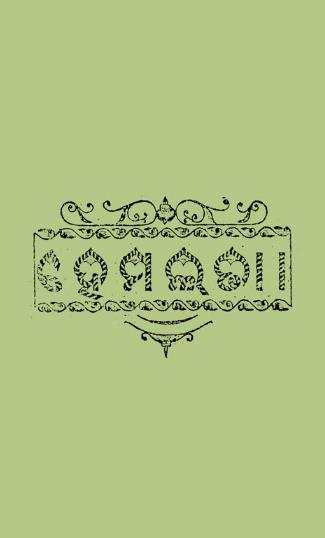Published in 1915, Hemalata by Chilakamurti Laksminrusimha, with translation by Dinabandhu Pal, is a significant work in the evolution of Odia literature. This novel is not only a compelling narrative but also a mirror reflecting the social dynamics and cultural mores of early 20th-century Odisha. Hemalata offers readers a profound exploration of love, sacrifice, and the complexities of human relationships against the backdrop of a rapidly changing society.
The early 1900s were a time of considerable transformation for India, especially in regional literary movements. As the country grappled with the realities of colonial rule, there was a burgeoning interest in issues like social reform, gender equality, and Indian cultural identity. Hemalata emerged during this vibrant period, when writers sought to address contemporary issues through their narratives, paving the way for a new literary form that blended artistry with social commentary.
At its heart, Hemalata tells the story of its titular character, a young woman navigating the trials of love and societal expectations. The novel intricately portrays Hemalata’s struggles as she contends with familial obligations, societal pressures, and her own desires. The narrative is rich in emotional depth, depicting her journey of self-discovery and resilience.
Hemalata’s character embodies the aspirations and challenges faced by women of her time. As she confronts obstacles that arise from rigid societal norms, her story becomes a poignant commentary on gender roles and the quest for autonomy. The novel explores themes of love, duty, and the sacrifices individuals must make for the sake of family and tradition, inviting readers to empathize with her plight.
Chilakamurti Laksminrusimha’s writing style in Hemalata is characterized by its lyrical prose and vivid imagery. The author skillfully employs descriptive language to create a rich tapestry of emotions and settings, allowing readers to immerse themselves in the world of the characters. Dialogue flows naturally, capturing the nuances of interpersonal relationships and the cultural context of the time.
The structure of the novel balances narrative progression with deep character exploration. Laksminrusimha delves into the inner thoughts and feelings of Hemalata and other characters, providing insights that enhance the emotional resonance of the story. This introspective approach makes Hemalata not just a tale of external conflicts, but also an examination of personal turmoil and growth.
One of the standout features of Hemalata is its subtle yet impactful social commentary. The novel addresses issues such as women’s education, the importance of personal freedom, and the constraints imposed by traditional roles. By portraying Hemalata’s journey, the author advocates for a more progressive view of women’s place in society, encouraging readers to reflect on the need for change.
Moreover, by weaving personal struggles with broader societal themes, Hemalata fosters a sense of connection between individual experiences and collective realities. This duality adds layers of meaning to the narrative, making it a crucial work in the landscape of Indian literature.
Hemalata has left a lasting legacy in Odia literature, inspiring subsequent generations of writers to tackle similar themes of love, sacrifice, and social reform. As one of the early novels to confront issues facing women in society, it opened the door for more nuanced portrayals of female characters in literature.
In choosing to translate this work, Dinabandhu Pal helped extend the reach of Hemalata, facilitating cross-cultural appreciation of Odia literature. This translation not only showcased the richness of the original text but also highlighted the importance of including diverse voices in the larger narrative of Indian literature.
Books Info
| Books name | Hemalata / ହେମଲତା |
| Author | Chilakamurti Laksminrusimha; Dinabandhu Pal, Tr. |
| No Of pages | 124 |
| Publisher | Sashi Bjhusana Rath |
| Publication | 1915 |
| Printed At | The Asha Press |
| Distributor | NA |

